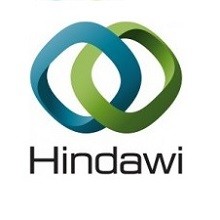
استفاده از سرنگ انسولین دامپزشکی و کنترل ناکافی دیابت نوع 3C
1- Introduction
2- Case Presentation
3- Discussion
4- Conclusion
References
Introduction
Te proportion of patients with diabetes currently on any insulin (includes insulin only and insulin plus oral diabetes medications) was 29.1% in 2005–2012 and has been relatively stable since 1988 with 30.3% [1]. Diabetes secondary to pancreatic diseases is commonly referred to as pancreatogenic diabetes or type 3c diabetes mellitus; it is a clinically relevant condition with a prevalence of 5%-10% among all diabetic subjects in Western populations. Tose with type 3c diabetes require insulin therapy more urgently than those with type 2, and most of them are discharged on insulin from the hospital [2].
Case Presentation
A 30-year-old male presented in December 2017 to the emergency department complaining of abdominal pain, which started around 3 am, and the pain was characterized as sharp, epigastric, nonradiating, and 9/10 in intensity. He admitted drinking alcohol, used to drink 5-6 glasses of wine/cocktails a day, but claimed he stopped a week ago, and he denied smoking or another illicit drug use. Laboratory exams on admission were signifcant for lactic acid 3.7 (0.7-2.0 mmol/L), lipase >3000IU/L (11-82 IU/L), WBC 33,300 mmcu (4,000-11,000mmcu), and glucose 147mg/dl (70-99mg/dl). Patient underwent CT abdomen that showed acute pancreatitis. Te next day patient glucose increased to 502mg/dl, bicarbonate was 18mg/dl (21-31mg/dl), and anion gap was 14. Patient then was transferred to Intensive Care Unit (ICU) for insulin infusion and management of diabetic ketoacidosis (DKA). His hemoglobin A1c was 5.5%. Repeat CT abdomen with contrast (Figure 2) was concerning for necrotizing pancreatitis. Afer few days he was switched to subcutaneous insulin glargine/aspart and transferred back to general medical foor. Because patient developed fever and had persistent leukocytosis, and he was started on meropenem. His conditioned improved and antibiotics were changed to oral doxycycline and levofoxacin; he was discharged on insulin glargine 20U at bedtime and correctional insulin.
